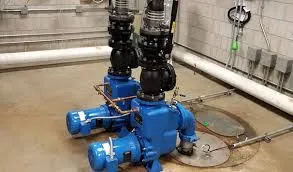English
- Afrikaans
- Albanian
- Amharic
- Arabic
- Armenian
- Azerbaijani
- Basque
- Belarusian
- Bengali
- Bosnian
- Bulgarian
- Catalan
- Cebuano
- Corsican
- Croatian
- Czech
- Danish
- Dutch
- English
- Esperanto
- Estonian
- Finnish
- French
- Frisian
- Galician
- Georgian
- German
- Greek
- Gujarati
- Haitian Creole
- hausa
- hawaiian
- Hebrew
- Hindi
- Miao
- Hungarian
- Icelandic
- igbo
- Indonesian
- irish
- Italian
- Japanese
- Javanese
- Kannada
- kazakh
- Khmer
- Rwandese
- Korean
- Kurdish
- Kyrgyz
- Lao
- Latin
- Latvian
- Lithuanian
- Luxembourgish
- Macedonian
- Malgashi
- Malay
- Malayalam
- Maltese
- Maori
- Marathi
- Mongolian
- Myanmar
- Nepali
- Norwegian
- Norwegian
- Occitan
- Pashto
- Persian
- Polish
- Portuguese
- Punjabi
- Romanian
- Russian
- Samoan
- Scottish Gaelic
- Serbian
- Sesotho
- Shona
- Sindhi
- Sinhala
- Slovak
- Slovenian
- Somali
- Spanish
- Sundanese
- Swahili
- Swedish
- Tagalog
- Tajik
- Tamil
- Tatar
- Telugu
- Thai
- Turkish
- Turkmen
- Ukrainian
- Urdu
- Uighur
- Uzbek
- Vietnamese
- Welsh
- Bantu
- Yiddish
- Yoruba
- Zulu
Telephone: +86 13120555503
Email: frank@cypump.com
Aug . 01, 2024 10:31 Back to list
Comprehensive Overview of Slurry Pump Specifications and Performance Characteristics for Optimal Application Use
Understanding Slurry Pumps An Overview Based on Data Sheets
Slurry pumps are essential equipment in various industrial applications, particularly in sectors such as mining, mineral processing, and wastewater treatment. These pumps are specifically designed to handle the transport of slurries, which are mixtures of solid particles suspended in liquids. The efficiency, durability, and reliability of slurry pumps are critical to the smooth operation of processes that require the movement of abrasive and corrosive materials.
Key Features of Slurry Pumps
A comprehensive slurry pump data sheet typically highlights several crucial features that define their performance and suitability for specific applications
1. Construction Material Slurry pumps are subject to severe operational conditions, often handling abrasive materials. Therefore, they are commonly made from high-chrome iron, rubber, or other specialized materials designed to resist wear and corrosion.
2. Pump Design The design of slurry pumps can vary significantly. Common configurations include centrifugal and positive displacement pumps. Centrifugal slurry pumps use rotational energy to transport the slurry, making them ideal for high flow rates and moderate head requirements. In contrast, positive displacement pumps provide high pressure and are suitable for thick slurry with a high percentage of solids.
3. Capacity and Head Slurry pump data sheets provide detailed specifications regarding the pump's capacity (measured in cubic meters per hour) and the head (measured in meters) it can generate. These parameters help engineers select the appropriate pump based on the required flow rate and elevation change of the slurry being transported.
4. Solids Handling Capability One of the most critical aspects of a slurry pump is its ability to handle solid particles of varying sizes and densities. Data sheets often specify the maximum particle size and concentration of solids the pump can efficiently manage, which is vital for maintaining pump performance and longevity.
slurry pump data sheet

5. Efficiency and Power Requirements Energy efficiency is a central concern for industrial processes. Slurry pump data sheets typically include efficiency ratings, helping operators calculate power requirements and optimize energy consumption.
Applications of Slurry Pumps
Slurry pumps are widely used across numerous industries. In mining, they are employed to transport slurries of ore and waste, crucial for ore extraction and processing. In the power generation sector, slurry pumps manage coal slurry for combustion processes and assist in the movement of ash for disposal. Additionally, in wastewater treatment facilities, these pumps help manage the transfer of sludge, ensuring efficient waste handling.
Maintenance and Operational Considerations
To optimize the performance and lifespan of slurry pumps, regular maintenance is essential. Proper servicing can prevent wear and potential failure, leading to costly downtimes. Operators should refer to the maintenance guidelines typically outlined in the data sheets, which recommend inspection intervals, replacement parts, and lubrication procedures.
Conclusion
Understanding the specifications and features outlined in slurry pump data sheets is vital for industries reliant on the efficient transport of slurries. The careful selection of pump types based on the application, along with diligent maintenance, can significantly influence operational efficiency and cost-effectiveness. As industries continue to evolve, the technology behind slurry pumps is also advancing, leading to improved designs that offer better performance and sustainability, essential for modern industrial applications.
-
ISG Series Vertical Pipeline Pump - Chi Yuan Pumps Co., LTD.|High Efficiency, Energy Conservation, Low Noise
NewsJul.29,2025
-
ISG Series Vertical Pipeline Pump-Chi Yuan Pumps Co., LTD.|High Efficiency&Energy-Saving
NewsJul.29,2025
-
ISG Series Vertical Pipeline Pump - Chi Yuan Pumps Co., LTD. | High Efficiency, Energy-Saving
NewsJul.29,2025
-
ISG Series Pipeline Pump - Chi Yuan Pumps | High Efficiency, Low Noise
NewsJul.29,2025
-
High-Efficiency Vertical Slurry Pumps for Mining & Industry Solutions
NewsJul.29,2025
-
High-Efficiency Pipeline Pump Solutions for Every Pipeline Pump Station
NewsJul.29,2025










